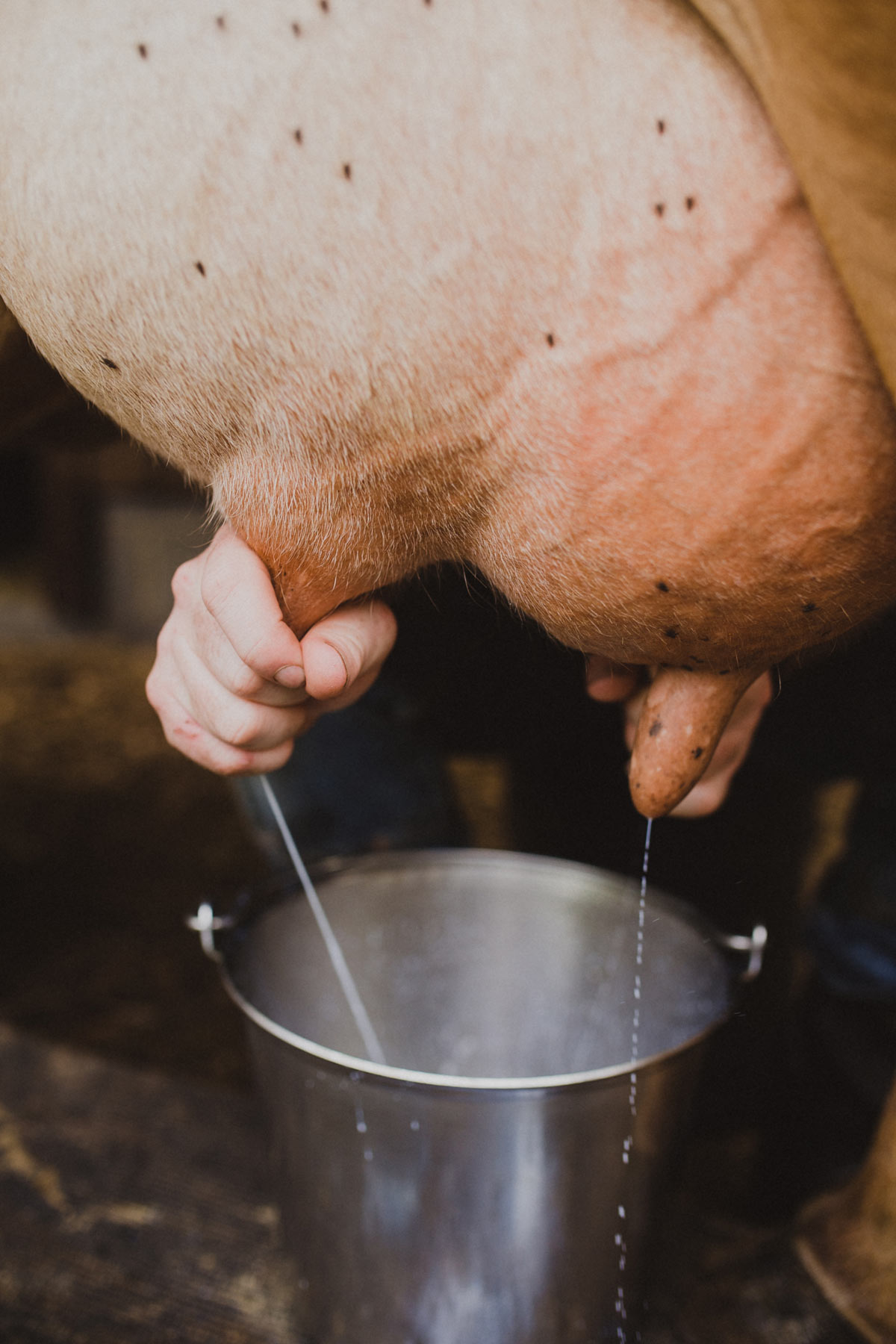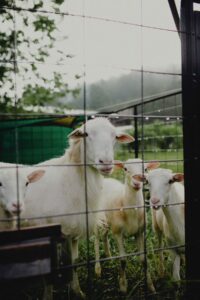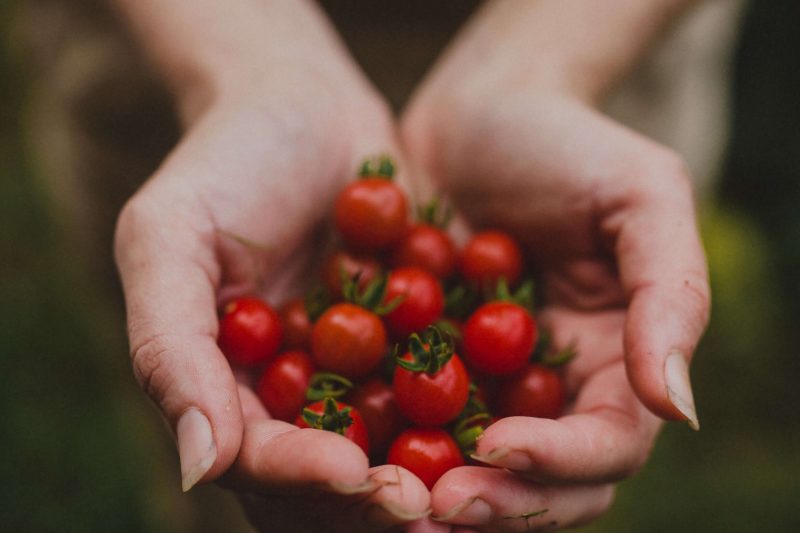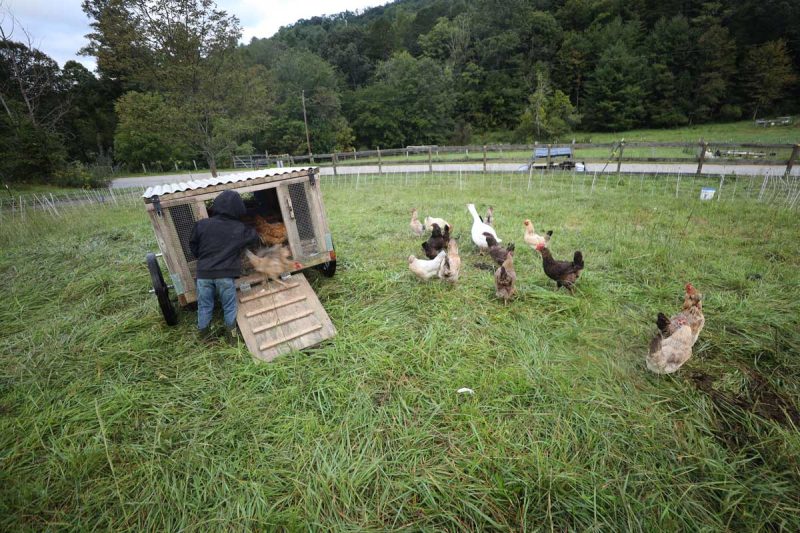Prevention is always key when it comes to mastitis. Be sure you know how to prevent mastitis in cows naturally here. But prevention doesn’t always do the trick. Read on to learn the protocol we used to treat mastitis in cows without antibiotic treatment.
It’s important to note that I am not an accredited veterinarian. This post is not intended to diagnose or treat but is for informational purposes only. Please contact your animal care professional before introducing new herbal remedies into their wellness routine.

Abundance Plus
If you’d like to watch a video on how we treated mastitis in our cows, and see all of our favorite products and books we have used in mastitis care, then sign up for a FREE seven-day trial of Abundance Plus here.
This video is one of the hundreds in our learning library on Abundance Plus. Anyone who signs up for A+ will also get discounts to Premier1, New Country Organics (where we get our organic alfalfa feed pellets), McMurray Hatchery, Johnny’s Selected Seeds, Meadow Creature and many more!
Now, back to treating mastitis in cows…
Reasons to Naturally Treat Mastitis in Cows
Homeopathic medicine is based on using the correct boosters to promote the body’s natural ability to heal itself. It has been a natural way of healing for centuries, using small amounts of natural substances to stimulate healing.
Many things in nature serve a purpose. The modern medical world has moved away from this, and most people no longer use these age-old remedies. Our forefathers knew how to use what they had access to, including the necessary care and treatment for their animals.

Can a Cow Recover From Mastitis?
Mastitis is a clogged milk duct in a cow’s udder. Environmental or contagious bacteria such as streptococcus agalactiae, escherichia coli, streptococcus uberis, coagulase-negative staphylococci, and staphylococcus aureus can cause mastitis.
When the milk duct is blocked, and the milk can’t pass through correctly, inflammation in the mammary gland starts, and an infection begins.
Mastitis can be very painful for infected cows. Milk production slows in lactating cows, and the goal is to quickly clear the clog, heal the infection, and get things running smoothly again.
Cows with heat or swelling in the udder, fever, and changes in milk production have clinical mastitis and require treatment. Treatments for clinical and subclinical mastitis are slightly different.
Subclinical cases of mastitis can heal without treatment but can be a source of spreading the infection to other cows in the herd.

Symptoms of Mastitis
How do you know if your cow has mastitis?
- Hard, Hot Quarter – If you catch it quickly enough, the mastitis should be confined to only a quarter of the infected udder.
- Agitation – A cow will be agitated when being milked, not wanting you to touch its udder because of the pain. An otherwise gentle cow may suddenly start kicking at you during milking.
- Fever – An advanced case of mastitis will likely lead to a fever in the cow.
- Appetite – You might notice a decreased appetite or refusal to eat.
Diagnosing Mastitis
There are several steps to take to diagnose mastitis at home before starting treatment.
- Temperature – Take the cow’s temperature with a thermometer. We caught our cow’s mastitis in its early stages, and no fever had developed. We knew she wasn’t feeling well, so we moved on to the next step.
- Screen Milk – Express some milk into a small container with a screen. The screen will catch any clots that may be in the milk. If you collect clots, you know something is going on.
- California Mastitis Test (CMT) – This is a milk collection kit we recommend you have in your medicine kit. It’s a four-sectioned container for collecting milk samples. Collect the samples and drop the recommended amount of included concentrated solution into each cup. The color of the milk will tell you which quarter of the udder is infected.
What Happens if Mastitis Isn’t Treated?
Cows infected with mastitis can become severely ill. They will eventually refuse to eat and drink, resulting in dehydration, weakness, and even death. The symptoms of a mild case can clear up on their own, but the bacteria will remain with the possibility of repeated mastitis occurrences.
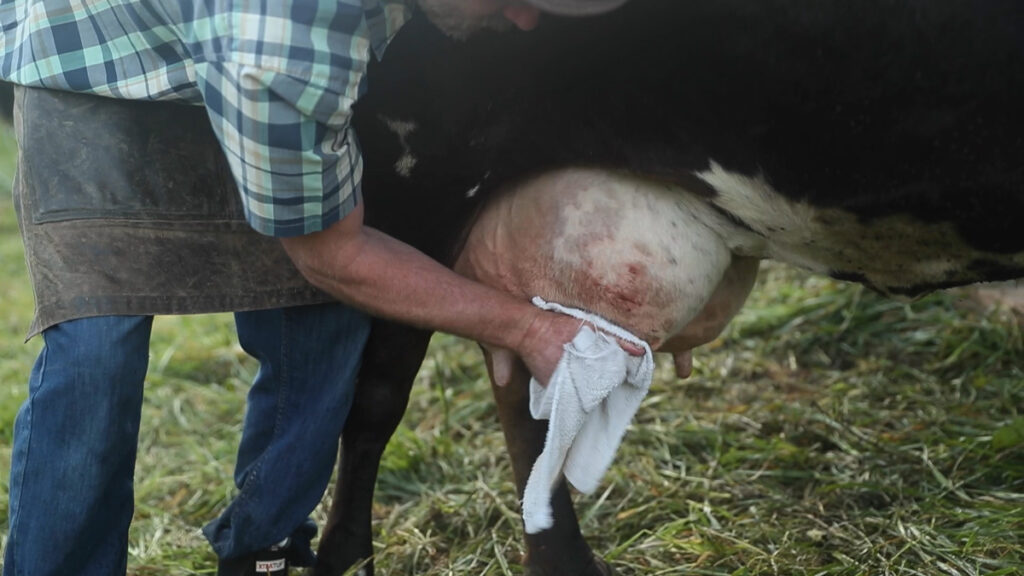
Treatment of Mastitis
Our treatment protocol combined different products I learned about while reading the books listed below. Our initial treatment was completed with these Synergy Animal Products.
Supplies Needed
- Ex-Cell Countdown 7000 – Works to help clear mastitis and other infections.
- Yellow Jacket Teat Tonic – An interchangeable product with Ex-Cell 7000.
- Aloe Juice – Not to be confused with aloe vera gel. Make sure to purchase pure juice. This can often be found at your local grocery store.
- Cellex Gold – Intramammary treatments such as this one are the ultimate in udder defense.
- Superior Cow Cream – You can use this ointment for anything abnormal with the udder.
Initial Treatment
- Treat the udder with Ex-Cell Countdown 7000. Give 20 cc’s orally three times daily. You can add it to 10 oz. of high-quality aloe juice.
- Infuse Cellex Gold into the teat canal with a syringe. Infuse 30cc’s into the affected quarter for three milkings.
- Cover the affected quarter with Superior Cow Cream every time you strip the teat. Note: Strip out the affected quarter three times (or more) a day if you have the treatments above. If you don’t have those treatments, strip out every hour during the waking hours, and leave the calf with mom 24/7. Use hot cloths on the affected quarter and massage to break up the curdled milk and bring down the clot.
Additional Homeopathy Treatment Options
Note: You may treat with Homeopathy and Synergy together if you have both, or choose one or the other.
- Boiron Phytolacca Decandra – This comes from poke root and helps clear up lymph issues. Purchase the 30C and dissolve ten pellets in warm water. Drench the teat three times a day for 3-5 days.
- Boiron Belladonna 200CK – If there is a fever present, treat with this to lower fever symptoms every hour for 2-5 doses.
- Garlic Tincture – Garlic is a powerful antioxidant.
- Vitamin C – This is a powerful immunity booster to help your cow get back to its ultimate health as soon as possible.
- Apple Cider Vinegar – A great supplement to add to feed to help clear out any lingering infection and boost the immune system.
Book Recommendations for Holistic Healing
- Homeopathy for the Herd – Written by C. Edgar Shaeffer, V. M. D. It is a farmer’s guide to low-cost, non-toxic veterinary care of dairy and beef cattle. This book is an invaluable resource! Several methods listed below came directly from this book, but the information is included for other diseases that may occur in your herd.
- Keeping a Family Cow – A complete guide for home-scale, holistic dairy producers have written by Joann S. Grohman. Another invaluable resource on my bookshelf. The recommendation for mastitis that we learned from this book was the hot-cloth, massage, and milk-stripping method. Stripping and massage brought relief to our cow, and we will practice this again if necessary.
If you have a milk cow, you’ll likely need to know these remedies for treating mastitis at some point. Our biggest recommendation is to have the supplies you need on hand before the infection happens to give you the best chance of beating it quickly.
Remember to check out Abundance Plus for more helpful videos and tutorials like this one.
